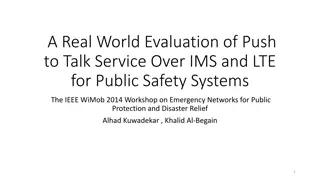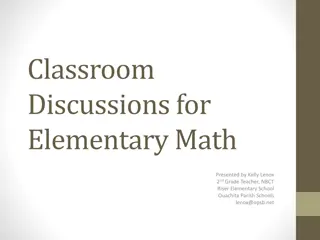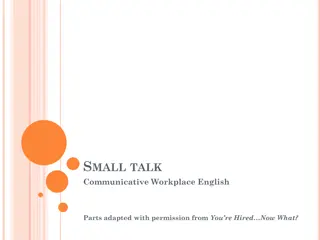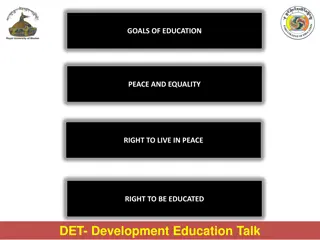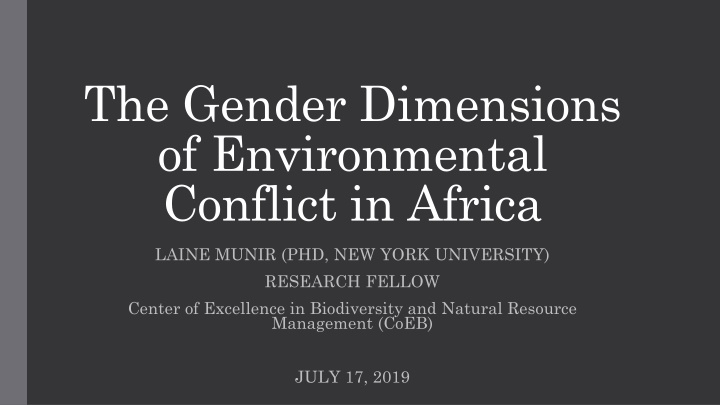
Gender Dimensions of Environmental Conflict in Africa - Insights by Laine Munir
Explore the impact of gender on environmental conflict in Africa through the eyes of Laine Munir, a Ph.D. research fellow. Discover gender perspectives on the environment, conflict, and their intersection, shedding light on key findings and implications.
Download Presentation

Please find below an Image/Link to download the presentation.
The content on the website is provided AS IS for your information and personal use only. It may not be sold, licensed, or shared on other websites without obtaining consent from the author. If you encounter any issues during the download, it is possible that the publisher has removed the file from their server.
You are allowed to download the files provided on this website for personal or commercial use, subject to the condition that they are used lawfully. All files are the property of their respective owners.
The content on the website is provided AS IS for your information and personal use only. It may not be sold, licensed, or shared on other websites without obtaining consent from the author.
E N D
Presentation Transcript
The Gender Dimensions of Environmental Conflict in Africa LAINE MUNIR (PHD, NEW YORK UNIVERSITY) RESEARCH FELLOW Center of Excellence in Biodiversity and Natural Resource Management (CoEB) JULY 17, 2019
CONTENTS I. Overview of the Field II. Environmental Conflict (A) III. Gender and the Environment (B) IV. Gender and Conflict (C) V. Gender and Environmental Conflict VI. PES in Sub-Saharan Africa VII. PES Questions for Rwanda 1
I. Overview of the Field Environmental Studies A. Environmental Conflict B. Gender & Environment C. Gender & Conflict Conflict/Security Studies Gender Studies 2
II. Environmental Conflict (A) Chronological overview: 1. Ecological security scholars: Asked, Should the environment be part of security studies? 2. Population growth makes conflict inevitable because of scarcity. 3. Distribution matters more than scarcity. 4. Control issues matter more than distribution or scarcity ; Concept of scarcity is relative; power dynamics at play. * Conflict does not always include physical violence. 3
III. Gender and the Environment (B) Ideological overview: 1. Liberal Feminism: Emphasizes autonomy of women by equalizing rights 2. Radical/Essentialist Feminism: Emphasizes reordering of society to ensure equity 3. Constructivist Feminism ( gender approach ): Emphasizes awareness of how gender and power are constructed through interactions Example: Payment for Ecological Services (PES) = compensation ($) to local communities for conservation that displaces them 4
IV. Gender and Conflict (C) Findings overview: 1. Conflict disproportionately impacts women sexual violence men and women have different roles during conflict impedes women s access to environmental resources gendered emphasis necessarily entails inclusion of children 2. Gender emphasis is helpful for peacebuilding 5
V. Gender and Environmental Conflict WHAT WE KNOW GLOBALLY THAT APPLIES TO AFRICA: 1. Men and women place different degrees of importance on different categories of ES. 2. Women use land daily and men less often, e.g. once per week. 3. Women may need communal lands more: less access to private land for resources* less access to cash economy, paid employment, and markets 4. Environmental damage, conflict, and conservation disproportionately costs women time. 5. Men and women engage in environmental violations for different reasons. 6
VI. PES in Sub-Saharan Africa Rising theme: Gender-sensitive conservation and compensation (PES) WHAT WE KNOW ABOUT COMPENSATION GLOBALLY THAT APPLIES TO AFRICA: 1. Various needs for trees and plants are gender-dependent. 2. When it comes to land and environmental resources, there is gender-based inequality in: community decision-making fair distribution of cash equality of rules enforcement information flow channels 7
VII. PES Questions for Rwanda 1) How does gendered division of labor in Rwanda impact environmental knowledge, and is that knowledge taken into account during assessment? 2) Are gender-based differences in environmental needs accounted for during the compensation process? 3) Does compensation that comes in the form of cash appropriately benefit women, in contrast to compensation in kind? 4) Can women engage in vocational training as a form of compensation with equity to men? POLICY: How can women be more equitably integrated into PES? 8
THANK YOU Laine Munir lmunir@gmu.edu 0780-232-081 9









